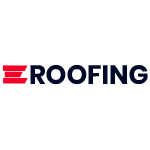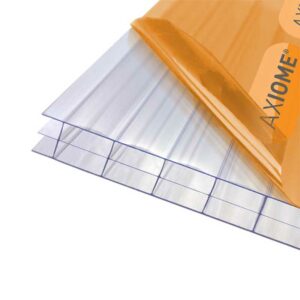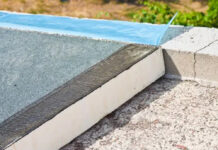While many roofing products have hundreds or even thousands of years worth of precedent of use, polycarbonate only began to be produced in industrial quantities in the 1960s. However, it’s proven itself to be massively versatile in a short span of time. This article will look at all the huge advantages that polycarbonate brings to the table.
Weight
The most obvious competitor to polycarbonate sheeting is glass. Both are transparent and strong. However, while glass is quite heavy, polycarbonate is much lighter. It weighs 50% less outright. Not only does this make polycarbonate easier to install even in pane form, it also allows for more creative implementations of polycarbonate than would be possible with glass.
Durability
It doesn’t just stop at weight. Whereas glass is famously fragile, polycarbonate is extremely durable. Some types of polycarbonate can approach even 200 times the level of durability of glass of the same thickness. Polycarbonate is often used to glaze bus shelters and other public places for this reason.
Polycarbonate isn’t just more resilient to impact however. It can also bear drilling without cracking, allowing it to be installed via screws easily even by a DIYer. Polycarbonate also is quite resistant to fire – though not totally fireproof, it has the next highest grade of fire resistance and produces very little smoke when burnt.
Structure
Like many types of plastics, polycarbonate is extremely easy to manipulate in many ways. The most common type of polycarbonate sheeting is not a solid pane of glazing but rather a twinwall or multiwall solution. This uses ultra-thin layers of polycarbonate separated by pockets of air, called chambers. This would not be possible with glass which is much heavier. The chambers also further improve the insulation factor of the polycarbonate.
Insulation
Multiwall sheeting has become a go-to for greenhouses and conservatories because of how much insulation it provides. But even thickness for thickness, polycarbonate has better insulation than glass.
Polycarbonate can be used as single panes. These panes are ideal for secondary glazing on window frames. Not only do you benefit from polycarbonate’s superior insulation but it also provides better durability against impacts from outside.
Waterproofing
Polycarbonate is waterproof which makes it extremely good for roofing purposes when taking everything else into account. This is why it’s commonly seen on all sorts of smaller garden features like pergolas as well as carports. It can withstand all different kinds of weather and temperature without sustaining damage.
Tinting
Finally, polycarbonate can also come in several different colours and shadings. Not only does this allow for different aesthetic appearances, but it can affect their functionality as well. Bronze polycarbonate, for example, gives reduced light transmission which is perfect for giving shade. Opal polycarbonate also does this, but with a frosted glass effect for extra privacy, and so on.








